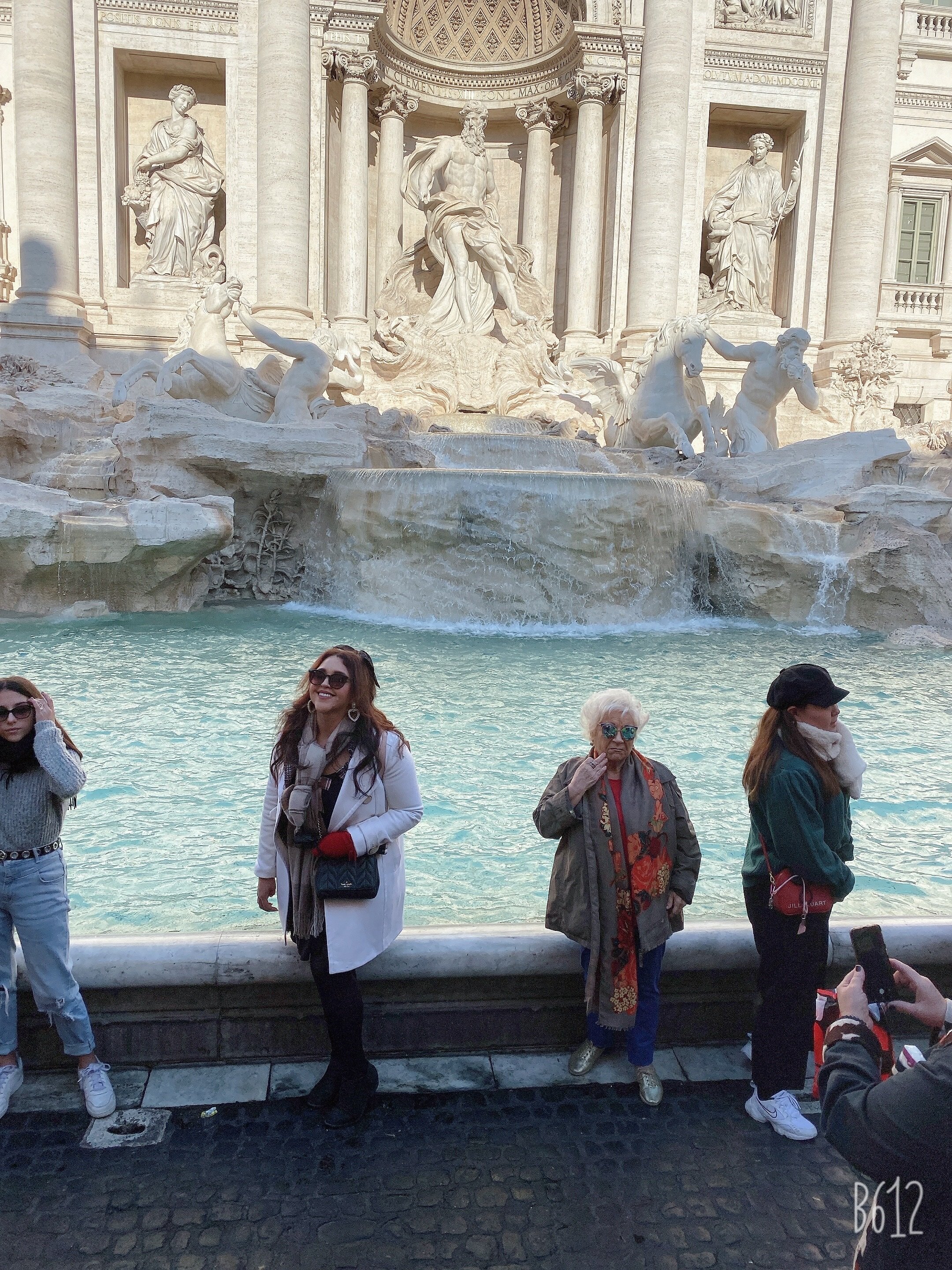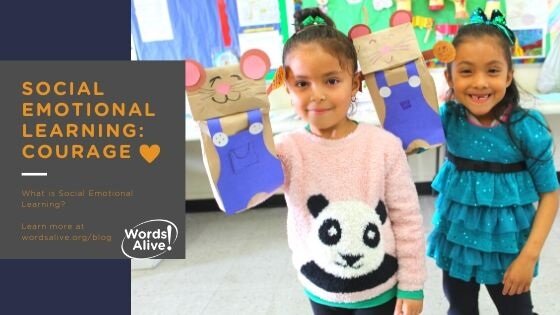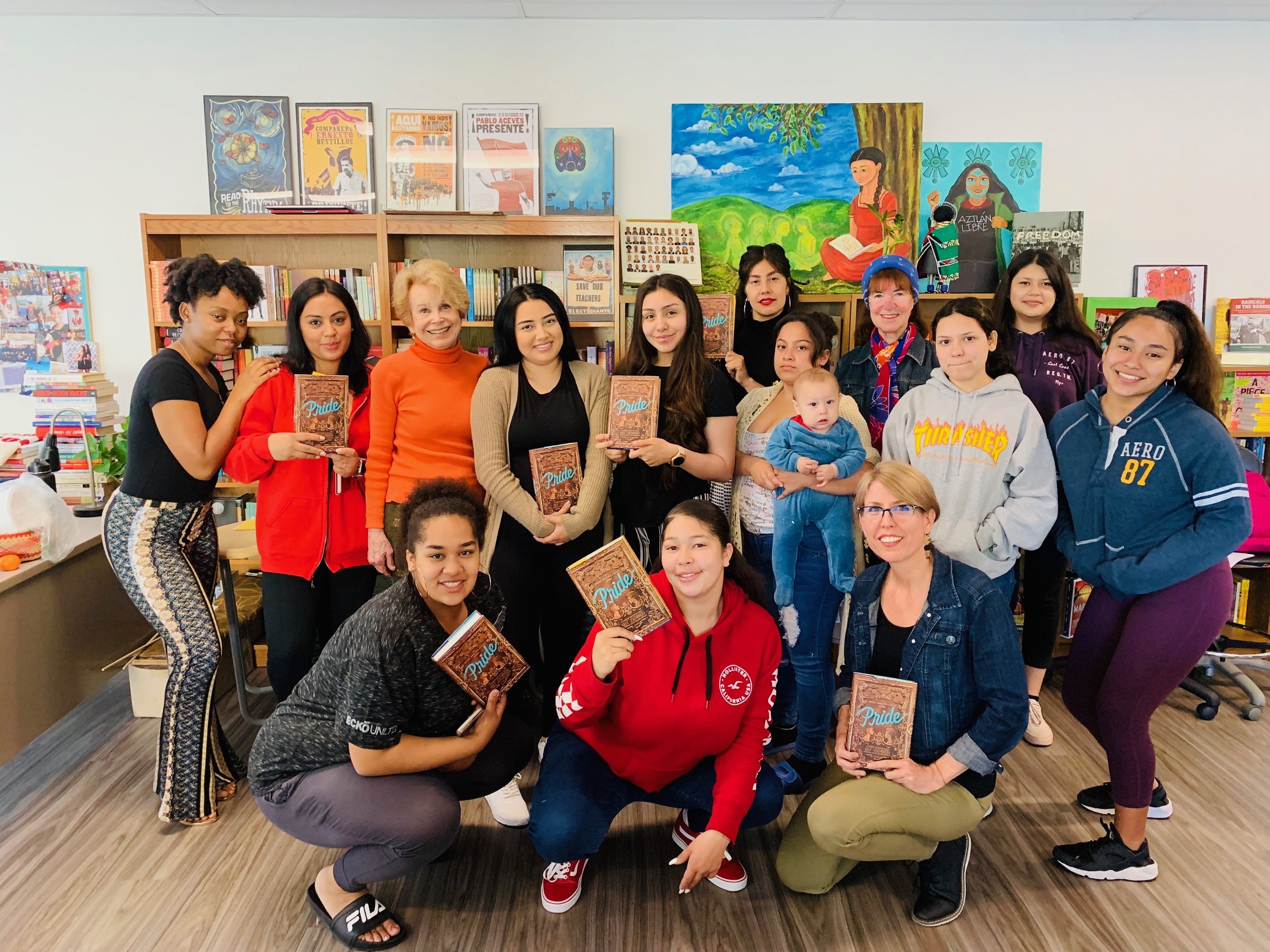By Yael Lorberfeld, Blog Volunteer
Forgiveness Comes with a Life Present
A lot has been said, but maybe not enough, about the need for attention to Social Emotional Learning in the educational system. Words Alive is following in the footsteps of the "Choose Love Program," which is working to integrate Social and Emotional Learning (SEL) in schools. They designed an enrichment program that aims to help children acquire the knowledge, attitudes, and skills necessary to recognize and regulate emotions, have a positive goal, have empathy for others, build positive relationships, and ultimately make responsible decisions.
"The Choose Love Program" believes that this task is possible when kids master the four pillars of their program, which are: Gratitude, Courage, Compassion, and Forgiveness.
Forgiveness is one of the four pillars because it can liberate us and give us a better emotional state.
Forgiveness and Mental Heath
According to Psychology Today (2020), forgiveness is vital for mental health. To become emotionally free, it is important to create a separation from a conflictive situation and the self. This way, resentment can be released. It helps people to be able to move ahead rather than keeping the emotional involvement in injustice or trauma.
Brain Activity
In the physical scope, carrying the hurt or anger of an offense leads the body to release stress hormones such as adrenaline and cortisol. Research has repeatedly linked health benefits to the reduction of stress. Eliminating the continuous flow of those hormones may explain why forgiveness yields to better health, such as lowering high blood pressure and heart problems. "There is a connection between forgiveness and mood improvement, optimism, as well as a shield against anger, stress, anxiety, and depression." (Psychology Today, 2020)
Life experiences with trustworthy people or with betrayal influence the range of how much a person will be forgiving. According to Heidi Moawad, MD (2018), forgiveness physically alters the brain's wiring. "It leads from the misery of a broken promise to wellness that builds new neuron pathways into physical, emotional, and spiritual well-being." It is outstanding how forgiveness or the lack of it influences our brain functions.
Forgiveness and Healing
Tamara Levitt (2013, 2020) affirms that even though forgiving someone might be difficult, it is incredibly healing. She emphasizes that forgiveness is not about justice, it’s about freedom. In this process, we often find that strong negative emotions towards a person who wronged us can soften, even for just a little. One technique she recommends is to take time to feel compassion for the events in the offender's life that brought that person to act the way they did. If so, there might be a shift in our perception. It might help to remember that everyone has their own challenges. She suggests following this practice, even if it is only to help stop the continuous harm of anger and resentment.
Steps towards Forgiveness
Psychologist Robert Enright (2011) outlines four Steps of Forgiveness.
The first is the recognition of your anger by exploring how you've addressed or avoided the emotion.
The second is a choice. It is the decision to forgive, regardless of the offender.
The third is to cultivate forgiveness by developing compassion for the offender.
Finally, the last step is to release the harmful emotions and reflect on how you may have grown from the experience and the act of forgiveness itself.
Some of the books on the Words Alive curriculum list that touch on the path towards understanding forgiveness are:
The Astonishing Color of After by Emily X. R. Pan
The Astonishing Color of After is the first book by Emily X.R. Pan's. In it, the topics of emotions, grief, and forgiveness are skillfully treated with the combination of fantasy and reality, using a very artistic approach. The book explores the passage of healing and the inner magic that can happen when we believe.
Leigh Chen Sanders goes to Taiwan to meet her grandmother, for the first time, in search of answers, after her mother committed suicide. She believes her mother turned into a beautiful bird after her passing. In the story, she searches for clarity and closeness with her; she finds herself chasing after ghosts, uncovering family secrets, and forming a new relationship with her grandparents. It is a novel about love, forgiveness, and self-discovery through family history.
Harbor Me, by Jacquelin Woodson
This book is about six kids that gather in weekly conversations in a classroom with no adults. They talk about their difficulties and find a space to feel safe and grow. When the six are together, they can express their feelings and fears they hide from the rest of the world. This way, they rise braver for the rest of their lives. They discuss topics related to family problems like parent incarceration, racial profiling, and adaptation to change. It is a story about braveness, forgiveness, and friendship.
Hey, Kiddo, by Jarrett J. Krosoczka
Hey, Kiddo is a memoir of a boy trying to make sense of his life with an addict mother, and a father who he doesn’t know. Krosoczka shows how he came to understand, through a gradual process, his parents' personal issues, as he was simultaneously forming his own identity. Living with his grandparents, he discovered the love for art, which lead him to write this book. It is a story about discoveries, growing up, forgiveness, and the use of art as a means to express and elaborate.
Through forgiveness, we can encounter a freer way to live, an emotional space from conflict, brain and body reduction of harmful stress hormones, and ultimately wellbeing, which can become a present of health and happiness to our life.
Learn more about the SEL topics of Gratitude, Courage, and Compassion.
Sources:
Robert D. Enright, Forgiving Life: A Pathway to Overcoming Resentment and Creating a Legacy of Love (APA Lifetools) Hardcover – January 15, 2012 .





















